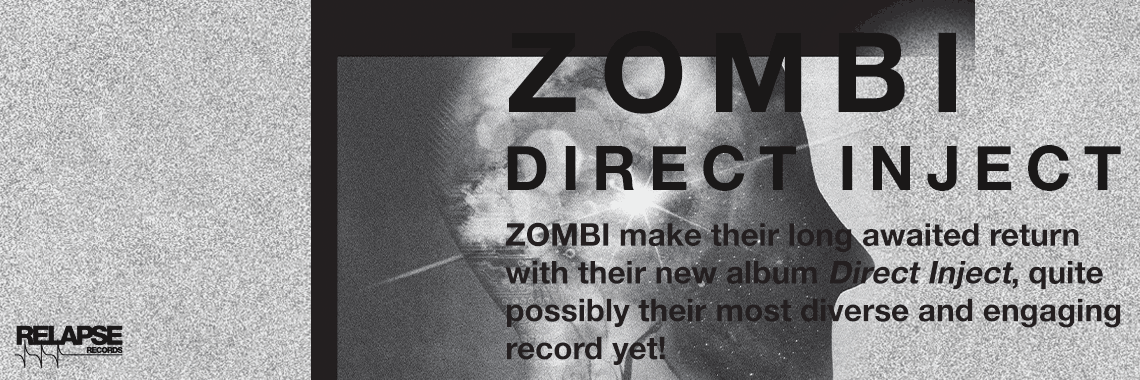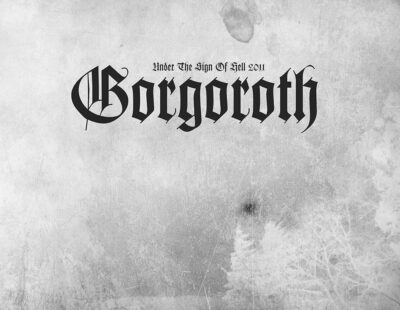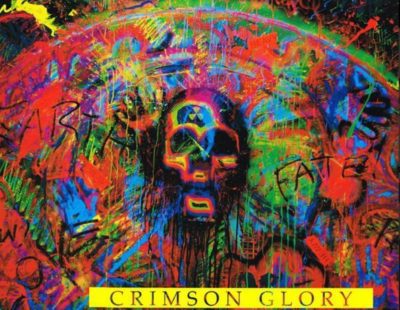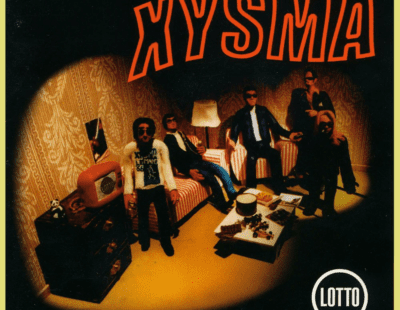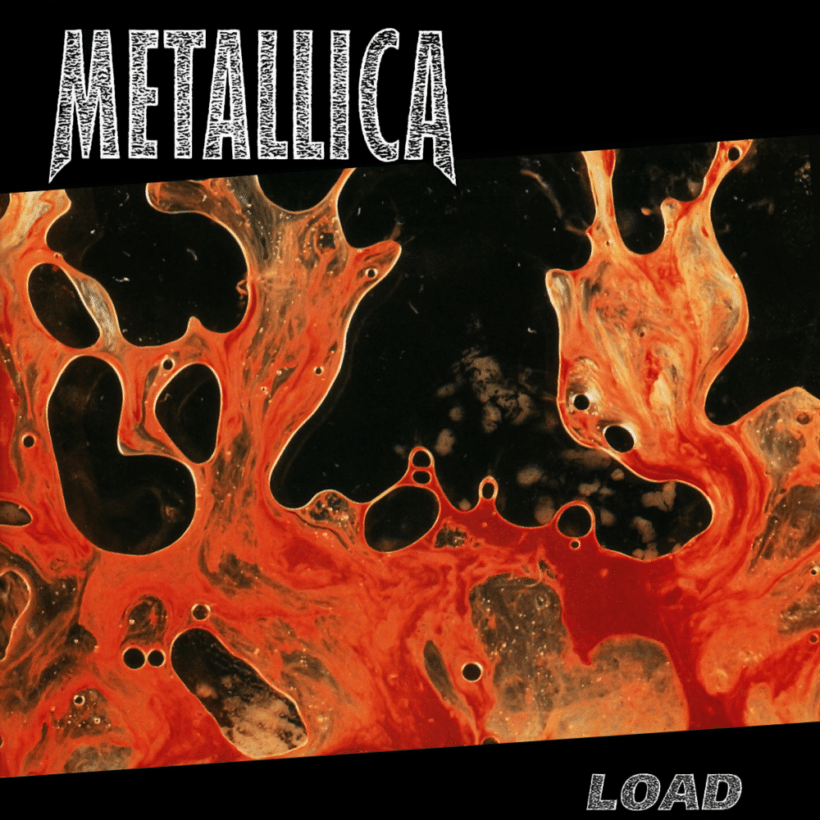
Almost every band has that album: you know, the critically and/or commercially reviled dud in an otherwise passable-to-radical back catalog. Occasionally, a Decibel staffer or special guest will take to the Decibel site to bitch and moan at length as to why everybody’s full of shit and said dud is, in fact, The Shit. Today, Invisible Oranges editor Joseph Schafer defends Metallica’s Load on the 20-year anniversary of its release.
People have been calling Metallica sellouts and has-beens since they released Ride the Lightning, and the chorus of “Fuck You”s grew each time the four horsemen released a record. 1984, no Marshall amps and a ballad? Fuck you. 1986, good production? Fuck you. 1988, no bass? Fuck you. 1991, unabashed pop songwriting? Fuck you. Even though the naysayers grew in number perennially, they were always wrong.
Twenty years ago today, after a five-year break, Metallica released Load, and the tables turned. At that point, the “Fuck You”s outnumbered the faithful. Every Metallica album sounds different from its predecessor, but each time Metallica made an incremental and logical change. Even if stripping the prog away and simplifying their songs for Metallica was a bold-faced commercial move, at least it made sense from a songwriting perspective.
Here’s the rub: the “Fuck You”s are still wrong. Load deserves praise. Its flaws run deep, but, it contains some of Metallica’s most interesting and affecting material.
You can’t blame Metallica for wanting a change. They’d been playing songs from The Black Album for three and a half years. Load’s cut-hair photo spread, new logo and art print cover (“Blood and Semen III” by Andres Serrano, a photograph of a mixture of his semen and bull’s blood sandwiched between two panes of plexiglas) suggest that the hard turn away from their roots is 100% intentional, and interviews with James Hetfield suggest that the heel-turn in their image was Hammett and Ulrich’s decision.
But the musical turn that Load takes is Hetfield’s. For one, it’s the first album he wrote after taking singing lessons during the Black Album tour. With proper technique, he pushed his voice into as much unexplored territory as he could, utilizing vocal overdubs to harmonize with himself and switching timbre between songs. Load is the sound of him finding his voice for the first time, and not just as a singer.
The oedipal and familial fixations that papa Het hinted at on songs like “Dyers Eve” took center stage during the Load sessions, following the death of his absentee father earlier in 1996.
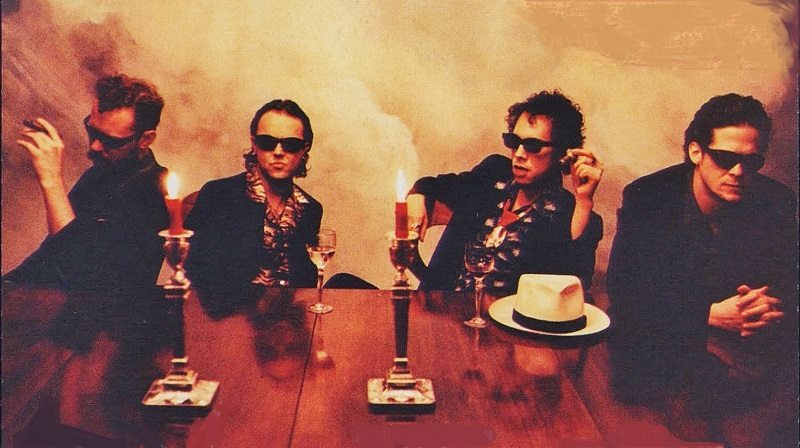
He metamorphosed from escapist metal lyricist to confessional songwriter in the American folk and blues vein, maybe thanks to all the time he was spending with Waylon Jennings. It’s an upgrade – the Cold War is over and the evils of mankind are more interesting than Cthulhu. His sonic palette expanded to match his voice and lyrics. “Hero of the Day” and “Mama Said” blend honky tonk into the Metallica sound. The former, a blend of Hetfield’s new sonic palate and an unused thrash-era riff, is one of the band’s most compositionally dynamic songs.
These songs don’t just sound like Hetfield turning himself inside-out, they also sound more American than Metallica had before. Load is Metallica’s love letter to their country of origin and its musical innovators. Lynyrd Skynyrd’s country-fried hard rock sound is an audible influence, but you can also hear Chris Isaak’s Silvertone-worship in “Until it Sleeps.” The weakest parts of Load, songs like “The Cure” and “Thorn Within,” could be Danzig songs.
American rock was always a part of Metallica’s sound, but they worked to bury it before Load. The pentatonic blues scale all but left their playing after Kill ‘Em All, replaced by tricks from European classical music and chromatic scales. For all the shade even diehard Metallica fans throw at him, Lars Ulrich was the band member that steered the band toward Diamond Head and Mercyful Fate as influences. Everyone out there sharing “It should have been Lars” memes ought to know: this is the closest thing to a Lars-less Metallica album we’re gonna get.
It’s worth noting that trying to make an American-sounding album made sense at the time. A similar strategy led U2 to record The Joshua Tree eight years before at the time of Load’s writing, and that album sold 25 million copies, 5 million less than The Black Album, but much more than its predecessor The Unforgettable Fire. That’s a big enough jump to give the same strategy a try. Perhaps as a direct nod to this idea, the band hired photographer Anton Corbijn, who shot the iconic cover of The Joshua Tree, to photograph the booklet photos in Load.
Matching the big money expectations left by Metallica meant an even more expensive production job, and they display every dollar. Give Bob Rock all the hate you want, but on Load he made Metallica sound huge without the gummy mids-scooping that hamstrings its predecessor. Listen to Load on a nice stereo system and marvel at its bottomless low-end, hot guitar tones and clear differentiation between instruments, which is impressive because there’s a whole lot going on. Metallica tried new things on this album, many of them – slide guitar – odd by Metallica’s conservative standards.
The weirder Metallica get on Load, the better it is. Hammett sounds disinterested in shredding but adept at getting odd, industrial drones out of his custom ESP guitars. His oddness collides with Hetfield’s outlaw country yearning on “Bleeding Me” and “The Outlaw Torn,” the two most underrated songs in Metallica’s discography. They present a fascinating fusion of metal, experimental rock and traditional American songwriting that the rest of metal is just starting to catch up with – more or less what Cobalt did earlier this year with more screaming.
The trouble is, they’re just surrounded by boring crap. Metallica fans hate Load because it’s not what they wanted out of the band, which is a shitty and uninteresting reason to hate a band breaking new ground and maturing as lyricists. The right reason to hate Load is that it’s where Metallica’s worst habit takes hold.
What Load needs is editing. The album is 78 minutes and 59 seconds long, as long as a compact disc can be. It’s so long, in fact, that they needed to cut off the end of “The Outlaw Torn.” Some of these songs could have been removed, and most could be shorter and still retain all of their impact. Metallica know this, even if they don’t talk about it: they’ve never played four of the fourteen songs on Load live. That’s over a quarter of the album. The ratio gets worse on Reload, which was composed of reworked songs from the Load sessions. That album deserves all of the ire it inspires, but the best cuts from Load (a little more than half of it) and Reload (the singles and “Fixxxer”) together on one hypothetical 55-minute album would be as good as their classics.
Would it be as popular? Hell no. People wanted The Black Album. They wanted someone to prove that extreme metal could be pop music and serious commercial art. Nobody has ever wanted a gothic, introspective experimental country-metal album. But it would be the best-sounding Metallica album with the best lyrics and vocal performance. That hypothetical album doesn’t exist, but there’s pieces of it on Load, and they’re kick-ass pieces embedded in a bloated, but understandable, failure.

